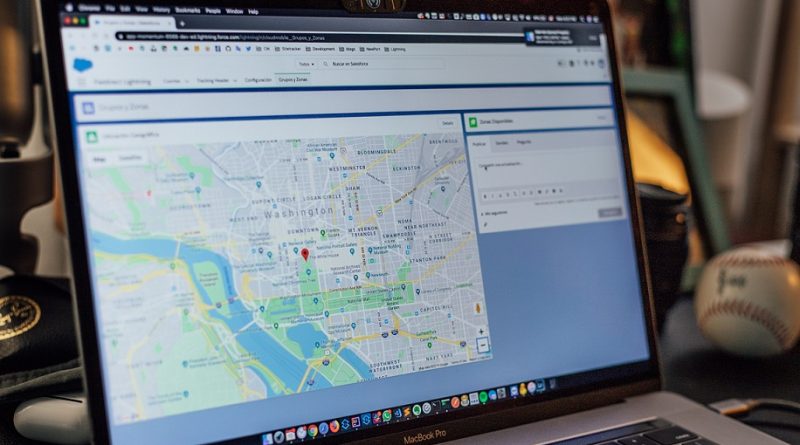Google map ranking tips
In the age of digital localization, Google Map has become an invaluable tool for businesses aiming to connect with local customers. Employing the strategies outlined in this essay empowers businesses to optimize their Google Maps ranking, enhance engagement, and amplify their local visibility. By embracing Google My Business, adhering to local SEO principles, capitalizing on location signals, and fostering user engagement, businesses can carve a distinct place for themselves on the digital map. As the realm of local search continues to evolve, mastering Google Map ranking strategies is an essential pursuit for businesses striving for local triumph.Here we will discuss about strategies and techniques to optimize their google map ranking and achieve enhanced local search prominence.
In an increasingly digital world, local businesses face a pressing challenge: how to stand out in the online marketplace and attract nearby customers. Google Maps, with its geolocation features and integration into search results, has emerged as a game-changer for businesses seeking local visibility. This article delves into the multifaceted strategies and techniques that can empower businesses to optimize their Google Maps rankings and achieve enhanced local search prominence.
I. The Power of Google Maps in Local Business
Google Maps has transformed the way users interact with local businesses. With the ubiquity of smartphones and the growing inclination toward convenience, users often turn to Google Maps for swift access to essential business information. This includes details like address, operating hours, contact numbers, and customer reviews. Google Maps serves as a bridge between the online and physical worlds, offering users a seamless way to discover, explore, and engage with local businesses.
II. Navigating the Google My Business Landscape
Central to effective Google Maps ranking is the Google My Business (GMB) platform. This free tool empowers businesses to manage their online presence on Google, encompassing Google Maps and Search. The initial step involves claiming and verifying the GMB listing. Upon verification, businesses should ensure their listing includes accurate and comprehensive information, such as location, phone number, website, and business category. The choice of categories and attributes should reflect the nature of the business to enhance its visibility for relevant searches.
III. Local SEO for Google Maps Ranking
Local search engine optimization (SEO) plays a pivotal role in Google Maps ranking. Keyword research tailored to local intent aids businesses in identifying phrases that potential customers use when searching for services or products in the vicinity. Incorporating these keywords naturally into GMB descriptions, posts, and website content helps improve the business’s visibility. Creating localized content on the business website, such as blog posts addressing local topics or events, further reinforces the local SEO strategy.
IV. Proximity and Location Signals
Proximity, the distance between the user and the business, significantly influences Google Maps rankings. Users often receive search results based on their current location. For businesses, optimizing for proximity involves ensuring that their GMB listing is accurate and up-to-date. Moreover, maintaining consistent business information, including name, address, and phone number (NAP), across various online platforms helps build credibility and signals to search engines that the business is reliable.
Geotagging images and optimizing metadata on the website can also contribute to better local visibility. This strategy ensures that search engines understand the geographical context of the business. Including keywords and location data in image descriptions and metadata assists search engines in associating the business with relevant searches.
V. Citations, NAP, and Backlinks
Citations, which are mentions of a business’s NAP on external websites or directories, significantly impact local search rankings. These citations validate the legitimacy and existence of the business. Consistency is key: maintaining uniform NAP information across all platforms, including GMB, the official website, and external directories, ensures that search engines have accurate data to display.
Building a network of local backlinks, where other reputable local websites link to the business, can enhance the business’s authority in local searches. These backlinks act as endorsements, indicating to search engines that the business is a valuable resource in the local context.
VI. Photos and Visual Appeal
A picture speaks a thousand words, and in the realm of Google Maps, images convey crucial information to potential customers. High-quality images of the business, products, and services enhance the business’s visual appeal. Images give users a glimpse into the business’s offerings, ambiance, and quality. Businesses can go beyond static images by including 360-degree photos and virtual tours, allowing users to virtually explore the establishment.
User-generated photos also contribute to the authenticity of the business. These images showcase real experiences of customers, providing social proof that the business is active and trusted.
VII. Encouraging User Engagement
Engagement on GMB plays a role in determining Google Maps rankings. Responding promptly and informatively to user queries in the Q&A section of the GMB listing not only assists users but also demonstrates the business’s commitment to customer service.
Google Posts, a feature within GMB, allows businesses to create and share updates, promotions, or news. Regularly posting updates keeps the listing fresh and engages users, potentially leading to higher rankings.
Enabling direct booking and messaging features on the GMB listing streamlines the customer journey. It empowers users to take immediate action, enhancing the chances of conversions.
VIII. Local Business Signals and Social Proof
Apart from GMB, consistent listings across local directories and platforms contribute to local search authority. Businesses should ensure that their NAP information remains consistent, accurate, and up-to-date across various online platforms, solidifying their credibility.
Positive online reviews are invaluable in local search ranking. Encouraging satisfied customers to leave reviews on the GMB listing not only boosts the business’s reputation but also provides social proof to potential customers. Google values these endorsements, and reviews impact the overall ranking within the local search ecosystem.
IX. Leveraging Google Maps Features
Google Maps offers an array of features that businesses can capitalize on to enhance their rankings and engagement:
- Google Maps Reviews: The reviews section is not only a platform for customers to share their experiences but also a crucial ranking factor. Encourage satisfied customers to leave positive reviews and engage with users’ feedback, showing a commitment to customer satisfaction.
- Google Maps Questions and Answers: Actively participate in the Q&A section, addressing user queries promptly and accurately. This not only assists potential customers but also signals to Google that the business is engaged and responsive.
- Google Posts: Regularly post updates, offers, events, and announcements using Google Posts. This keeps your listing fresh and encourages user interaction, potentially boosting rankings.
X. Monitoring and Adaptation
Google Maps ranking is not a one-time effort; it requires ongoing monitoring and adaptation. Regularly review your GMB insights to gain insights into user behavior, popular times, and search queries. Use this data to fine-tune your strategies and content.
XI. Competitive Analysis
Examine the Google Maps rankings of your competitors. Understand what they are doing well and identify gaps in your strategy. This analysis can provide valuable insights into emerging trends and potential areas for improvement.
XII. Incorporating Local Trends
Stay attuned to local trends, events, and keywords. If there’s a local event or buzzworthy topic, consider how you can incorporate it into your content strategy. This not only positions your business as relevant but also taps into current search trends.
XIII. Mobile Optimization
Given the dominance of mobile devices in local searches, ensure that your website and content are optimized for mobile viewing. A seamless mobile experience can contribute to improved user engagement and, consequently, better Google Maps rankings.
XIV. Staying Abreast of Algorithm Updates
Google’s algorithms are continually evolving. Stay informed about updates that might impact local search rankings. Keep up with industry blogs, Google’s official announcements, and expert insights to adapt your strategies accordingly.
As businesses seek to thrive in the local digital landscape, mastering Google Maps ranking emerges as a critical endeavor. The strategies discussed in this essay provide a roadmap for businesses to enhance their local visibility, engage with potential customers, and secure a competitive edge. By understanding the intricate balance of local SEO, engagement tactics, and leveraging Google Maps features, businesses can position themselves as local authorities and create lasting impressions on the digital map. In an era where proximity and convenience reign, Google Maps is the compass that guides businesses toward local triumph, one optimized strategy at a time.
In the dynamic landscape of local business visibility, mastering Google Maps ranking is indispensable. By strategically navigating the Google My Business platform, optimizing for local SEO, and capitalizing on location signals, businesses can transcend geographical boundaries and cater to local audiences effectively. Proximity, consistent NAP data, and user-generated content contribute to the authenticity that Google seeks in its search results. As businesses focus on enhancing user engagement, encouraging reviews, and maintaining a consistent online presence, they position themselves to reap the benefits of improved Google Maps rankings. In this digital age, Google Maps serves as a guide, leading businesses toward local success.
Tips and strategies to rank in google map or local search
In the modern digital landscape, local businesses are presented with a remarkable opportunity to connect with nearby customers through Google Maps. With the majority of consumers relying on digital platforms to find local services and products, Google Maps has emerged as a vital tool for businesses aiming to enhance their local visibility. This essay delves into an array of proven strategies that businesses can leverage to optimize their Google Maps ranking, thereby fostering increased local engagement and growth.
I. Google Maps: A Local Business Game Changer
Google Maps has revolutionized the way people discover, explore, and interact with businesses in their vicinity. It’s no longer just a navigational tool; it’s a dynamic platform that enables users to access essential business information seamlessly. From locating a nearby café to finding the nearest gym, Google Maps acts as a bridge between online information and real-world experiences. This connection has made it imperative for businesses to grasp the intricacies of Google Maps and harness its potential to enhance their local presence.
II. Unpacking the Google My Business Landscape
At the heart of effective Google Maps ranking lies the Google My Business (GMB) platform. GMB equips businesses with a direct channel to communicate essential information to potential customers. To initiate this process, businesses need to claim and verify their GMB listing. Ensuring that the listing is complete with accurate details, including the business’s name, address, phone number, and website, is pivotal. Additionally, selecting the appropriate business categories and attributes is crucial for aligning with user searches.
III. The Role of Local SEO in Google Maps Ranking
A well-crafted local search engine optimization (SEO) strategy is pivotal for achieving a prominent position on Google Maps. The foundation of local SEO is conducting thorough keyword research tailored to local intent. By identifying the keywords that potential customers use when seeking local services, businesses can strategically incorporate these terms into their GMB descriptions, posts, and website content. Crafting localized content, such as blog posts addressing local events or news, further amplifies the business’s local SEO efforts.
IV. Harnessing Proximity and Location Signals
Proximity-based searches are becoming increasingly prevalent, driven by users seeking nearby solutions. Optimizing for proximity involves a two-fold approach. First, businesses must ensure that their GMB listing is accurate and up-to-date. This includes providing precise geographical information and operating hours. Second, maintaining consistent NAP (Name, Address, Phone Number) information across all online platforms is essential for search engines to establish the business’s reliability and credibility.
V. Citations, NAP Consistency, and Local Backlinks
Citations, which involve mentioning a business’s NAP information on external websites and directories, play a significant role in local search ranking. These citations validate the business’s existence and legitimacy. Maintaining uniform NAP information across various platforms, including GMB, the official website, and directories, establishes trustworthiness and consistency in the eyes of search engines.
Building a network of local backlinks is another effective strategy. These backlinks, originating from reputable local sources, validate the business’s prominence in the local context. They demonstrate to search engines that the business is a valuable resource within the community.
VI. The Visual Advantage: Photos and Content
Visual content is a powerful tool in the digital realm, and Google Maps is no exception. High-quality images of the business, its offerings, and its ambiance enhance the user experience. These images offer a glimpse into what customers can expect, potentially influencing their decisions. Going a step further, businesses can incorporate 360-degree photos and virtual tours, providing users with an immersive experience of the establishment.
Encouraging user-generated photos contributes to authenticity. These photos provide a real-life perspective and enhance social proof, giving potential customers a genuine insight into the business.
VII. Fostering User Engagement
User engagement on GMB is a factor that affects Google Maps ranking. Active participation in user interactions enhances the business’s online presence. Responding promptly and informatively to user queries in the Q&A section not only aids potential customers but also signals to Google that the business is engaged and customer-oriented.
Leveraging Google Posts, a feature within GMB, enables businesses to share updates, offers, events, and announcements directly with users. Regular posting keeps the listing fresh and engaging, potentially leading to higher rankings.
Additionally, enabling direct booking and messaging features streamlines the user journey, offering them convenient ways to interact with the business.
VIII. Embracing Local Business Signals and Reviews
Consistent listings across local directories and platforms contribute to the business’s local search authority. Ensuring accurate and up-to-date NAP information across various online platforms establishes credibility and reinforces the business’s reliability.
Online reviews are a pivotal element in local search ranking. Positive reviews not only enhance the business’s reputation but also provide social proof to potential customers. Encouraging satisfied customers to leave reviews on the GMB listing is a proactive strategy to boost local search visibility.
IX. Emulating Successful Competitors
Conducting competitive analysis offers valuable insights into what works in the local context. Analyze competitors who are ranking well on Google Maps. Understand their strategies, content, and engagement tactics. This analysis can help you identify gaps in your own strategy and adopt successful elements.
X. Staying Informed About Algorithm Changes
Google’s algorithms are continually evolving, impacting search results. Stay informed about algorithm updates, especially those related to local search. Regularly check industry resources, official announcements, and expert insights to adapt your strategies in response to algorithm changes.
XI. Adapting to Local Trends and Events
Stay attuned to local trends, events, and keywords that are gaining traction in your community. Incorporating local trends into your content strategy demonstrates relevance and can boost engagement. For instance, creating content related to local events or holidays can resonate with users and enhance your local presence.
XII. The Mobile Experience
Given the prevalence of mobile devices, ensuring your website and content are mobile-friendly is imperative. A seamless mobile experience contributes to user engagement and satisfaction, indirectly impacting your Google Maps ranking.






